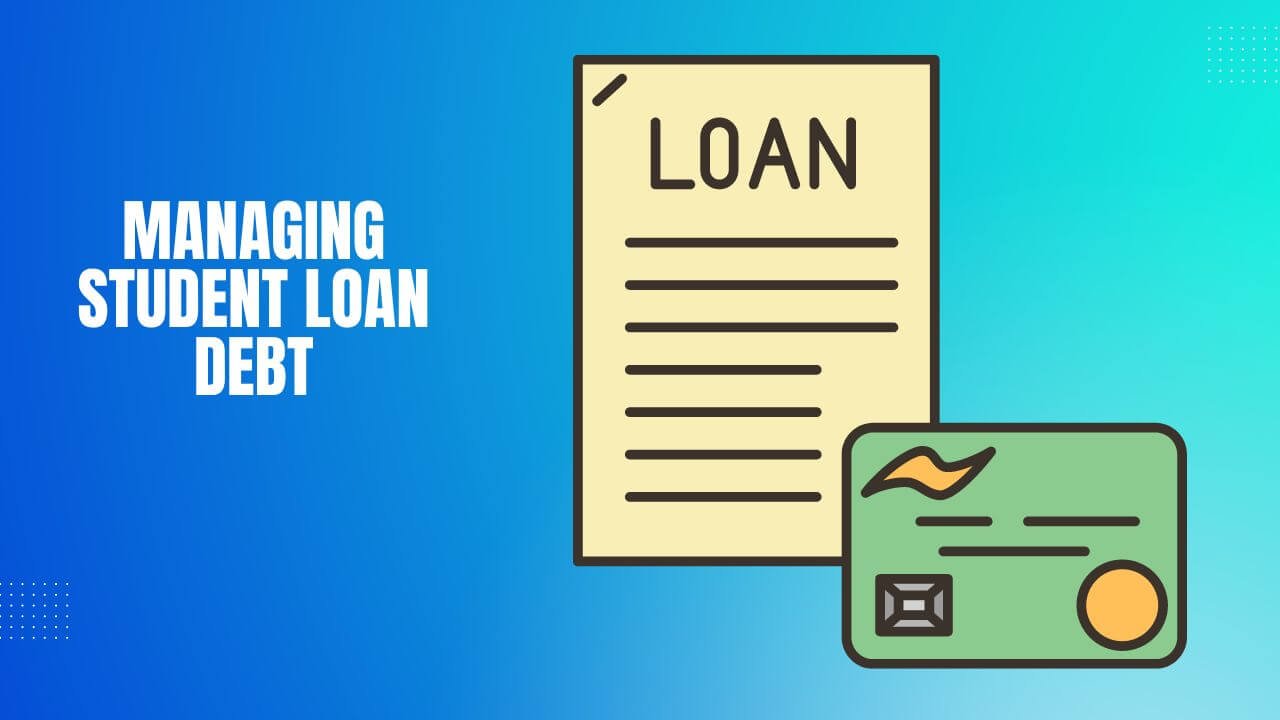Student loan debt has become a defining issue for millennials today. According to the Federal Reserve, outstanding student loan debt in the United States has reached a staggering $1.8 trillion, making it the second-largest category of household debt after mortgages.
This is particularly alarming when we consider that the average student loan borrower graduates with over $37,000 in debt, and the burden is even greater for those who attend graduate or professional school.
The rising cost of college and the increasing need for higher education have only exacerbated the problem.
The National Center for Education Statistics reports that the average cost of tuition and fees at public four-year institutions has risen by 34% over the past decade, while the cost at private nonprofit four-year institutions has risen by 26%.
Meanwhile, wages have failed to keep up with these rising costs, leaving many millennials feeling financially squeezed.
For many, student loans represent their first significant financial obligation and can be a source of significant stress and uncertainty. A recent survey by the National Financial Educators Council found that 70% of college students worry about their ability to repay their student loans, while 60% report feeling anxious about their financial situation.
Understanding and managing student loan debt is a critical skill for millennials who want to take control of their financial futures. In this comprehensive guide, we’ll explore everything you need to know about student loans, from the different types of loans available to repayment options and strategies for avoiding default.
Whether you’re just starting to think about college or you’re already struggling to manage your student loans, this guide will provide you with the knowledge and tools you need to successfully navigate this important financial challenge.
It’s important to remember that student loan debt doesn’t have to be a lifelong burden. With the right strategies and tools, you can take control of your debt and achieve financial freedom.
So, whether you’re a recent graduate struggling to make ends meet or a college student just beginning to navigate the world of student loans, this guide is for you.
1. Understanding Student Loans
1.1 Student Loans and How They Work
Millennials are facing a student loan debt crisis like no other generation before them. According to recent statistics, over 45 million Americans collectively owe $1.8 trillion in student loan debt.
This is a staggering amount that is impacting the financial health and future of millions of young adults. Understanding how student loans work is crucial for millennials who are looking to finance their education without crippling themselves financially for years to come.
When you take out a student loan, you are essentially borrowing money from a lender to pay for your education. This could include tuition, fees, books, room and board, and other expenses related to your studies.
Student loans can come from the federal government, private lenders, or state agencies. Once you take out the loan, you will be required to pay back the borrowed amount with interest.
1.2 Different Types of Student Loans (Federal, Private, etc.)
There are different types of student loans available to borrowers, each with its own set of benefits and drawbacks. The most common types of student loans are federal student loans and private student loans.
Federal student loans are backed by the government and typically come with lower interest rates, flexible repayment options, and forgiveness programs.
There are three types of federal student loans: Direct Subsidized Loans, Direct Unsubsidized Loans, and Direct PLUS Loans.
Direct Subsidized Loans are available to undergraduate students who demonstrate financial need, while Direct Unsubsidized Loans are available to both undergraduate and graduate students and do not require students to demonstrate financial need.
Direct PLUS Loans are available to parents of dependent undergraduate students and graduate or professional students.
Private student loans are offered by private lenders and are typically more expensive than federal student loans.
Private student loans can have variable interest rates and fewer repayment options, but they can be a good option for borrowers who have maxed out their federal student loan options or who have excellent credit and can qualify for lower interest rates.

1.3 Interest Rates and How They Impact Repayment
Interest rates can have a significant impact on the repayment of student loans. Interest rates are the amount of money charged by the lender for borrowing the money and are expressed as a percentage of the total loan amount. The higher the interest rate, the more you will have to pay back over the life of the loan.
Federal student loans come with fixed interest rates that are set by the government each year. Private student loans, on the other hand, can have fixed or variable interest rates, which can fluctuate over time.
Understanding how interest accrues on your student loans is important when it comes to repayment. Interest accrues daily, meaning that the longer you take to pay back your loan, the more interest you will accrue.
Making your payments on time and paying more than the minimum payment whenever possible can reduce the amount of interest you will pay over the life of the loan.
1.4 Loan Limits and Borrowing Responsibly
Borrowing responsibly is important when it comes to student loans. Federal student loans come with annual and lifetime borrowing limits, which are set by the government.
These limits vary depending on the type of loan and whether you are a dependent or independent student.
Private student loans, on the other hand, do not have annual or lifetime borrowing limits, but it’s important to only borrow what you need and to shop around for the best interest rates and repayment options.
It’s also important to consider the potential return on investment when borrowing money for college. If you are pursuing a degree in a field that has a high earning potential, it may be worth taking out more money in student loans.
However, if you are pursuing a degree in a field with a lower earning potential, it may be wise to minimize your student
2. Managing Student Loans
2.1 Overview of Repayment Plans (Standard, Income-Driven, etc.)
When it comes to repaying your student loans, it can feel overwhelming to choose from the various repayment plans available. It’s crucial to understand the different repayment plans to determine the best option that suits your financial situation.
- The Standard Repayment plan is the default repayment plan for federal student loans and involves making fixed monthly payments over ten years.
- The Graduated Repayment plan is ideal for those who expect their income to increase over time. With this plan, the monthly payments start low and gradually increase over time.
- The Extended Repayment plan extends the repayment term beyond 10 years, which can lower the monthly payments but increases the interest paid over time.
- Income-Driven Repayment plans base your monthly payments on your income and can be a great option for those struggling to make their payments.
These plans include Pay As You Earn (PAYE), Revised Pay As You Earn (REPAYE), Income-Based Repayment (IBR), and Income-Contingent Repayment (ICR).
2.2 Loan Consolidation and Refinancing
Consolidating your federal student loans can simplify the repayment process by combining multiple loans into one. This can help reduce the stress of managing multiple payments and potentially lower the monthly payment.
It’s essential to weigh the benefits of consolidating with the downsides, such as potentially increasing the total amount of interest paid over the life of the loan.
Refinancing your student loans with a private lender can be a smart move if you have high-interest private loans.
However, it’s important to consider the benefits of federal loans, such as income-driven repayment plans, before deciding to refinance.
2.3 Deferment and Forbearance Options
Deferment and forbearance are options available to temporarily suspend or reduce your student loan payments.
Deferment is a good option if you are unemployed, serving in the military, or experiencing financial hardship. During deferment, interest continues to accrue on your loan.
Forbearance is a temporary suspension of your loan payments, usually for up to 12 months. Interest accrues on both federal and private loans during forbearance, and it’s important to note that forbearance may result in higher interest paid over the life of the loan.
2.4 Importance of Budgeting and Creating a Repayment Plan
Budgeting and creating a repayment plan are essential steps to managing your student loan debt.
Begin by calculating your monthly income and expenses to determine how much you can afford to put towards your student loans each month. Once you have a clear understanding of your finances, you can create a realistic repayment plan.
Consider setting up automatic payments to ensure you make your payments on time each month.
Additionally, make extra payments whenever possible to reduce the amount of interest paid over the life of the loan.
Having a repayment plan in place can help avoid defaulting on your loans and minimize financial stress.
2.5 Tips for Managing Multiple Loans
Managing multiple student loans can be overwhelming, but there are ways to simplify the process.
Consolidating your federal loans can simplify payments, but private loans cannot be consolidated with federal loans.
Consider using a loan management app to keep track of payment due dates and the outstanding balances on each loan.
Another option is to prioritize paying off loans with the highest interest rates first. This strategy can save you money in the long run and reduce your debt more quickly.
Finally, consider seeking the help of a financial advisor to help manage your student loan debt and create a repayment plan that works for you.

3. Avoiding Default
3.1 Consequences of Defaulting on Student Loans
As a millennial, defaulting on your student loans can have a significant impact on your financial future. Not only will it damage your credit score, but it can also hinder your ability to secure loans, credit cards, and even housing or job opportunities.
Defaulting can also result in wage garnishment, wherein a portion of your paycheck is withheld to pay off your loans, making it harder to make ends meet.
3.2 Ways to Avoid Default (Repayment Plans, Deferment, etc.)
To avoid defaulting, it’s crucial to understand your options.
- Consider switching to an income-driven repayment plan, which can lower your monthly payments and make them more manageable.
- Apply for deferment or forbearance, which can temporarily suspend or reduce your payments, but keep in mind that interest will continue to accrue during this period.
- Prioritize your loan payments in your budget and make payments on time. If possible, consider making extra payments to reduce the amount of interest you will pay over time.
- Consolidating or refinancing your loans may also be an option to consider if you have multiple loans with varying interest rates.
3.3 Tips for Communicating with Loan Servicers
Communicating with your loan servicer is critical in avoiding default. Be proactive in reviewing your loan servicer’s website to understand your options and payment plans.
If you have questions, don’t hesitate to contact your loan servicer by phone or email.
When communicating with your loan servicer, be sure to ask about any available repayment plans, deferment or forbearance options, and potential interest rate reductions. Keep track of your conversations and any changes to your payment plan.
If you’re struggling to communicate with your loan servicer or resolve issues, the Department of Education’s Federal Student Aid Ombudsman Group can assist you.
In summary, avoiding default requires careful planning, budgeting, and communication with your loan servicer.
By understanding your options and staying on top of your payments, you can successfully manage your student loan debt and avoid the severe consequences of default, setting yourself up for a more stable financial future.

4. Resources for Managing Student Loan Debt
4.1 Resources Available for Managing Student Loan Debt
Managing student loan debt can be overwhelming, especially for millennials who are just starting their careers and trying to manage their finances.
However, there are resources available to help make the process more manageable.
Government websites, nonprofit organizations, and financial institutions offer a variety of resources to help you understand and manage your student loan debt.
One of the most valuable resources available in the Department of Education’s Federal Student Aid website, which provides a wealth of information on loan repayment options, loan consolidation, deferment and forbearance, and loan forgiveness and discharge. This website is a great starting point for anyone looking to understand their options for managing their student loan debt.
Nonprofit organizations such as The Institute of Student Loan Advisors (TISLA) and The National Foundation for Credit Counseling (NFCC) also provide valuable resources to help borrowers manage their student loan debt. They offer free counseling and resources to help you navigate the complex world of student loan repayment, including budgeting, repayment plans, and navigating loan forgiveness and discharge programs.
4.2 Tools for Budgeting and Tracking Repayment Progress
Several tools are available to help you manage your student loan debt effectively.
Mint and Personal Capital are two free budgeting apps that allow you to track your income, expenses, and student loan payments. You can set financial goals and create a budget to ensure that you’re making your student loan payments on time while still meeting your other financial obligations.
Another useful tool is Student Loan Hero, which offers a student loan repayment calculator and a dashboard to track your loans and repayment progress. You can also compare refinancing options to find the best interest rates and terms for your loans.
4.3 Student Loan Repayment Assistance Programs
Employers and organizations offer student loan repayment assistance programs to help their employees manage their debt. These programs can provide financial assistance to help pay off your loans, usually in exchange for a commitment to work for a specific period.
This is a great way to get some extra help paying down your student loan debt while also gaining valuable work experience.
Examples of organizations that offer student loan repayment assistance programs include the military, government agencies, and healthcare organizations.
It’s important to research potential employers to see if they offer any loan repayment assistance programs before accepting a job offer.
In addition to employer-based programs, some states offer loan repayment assistance programs to professionals in high-need fields, such as teachers and healthcare professionals.
These programs can provide financial assistance to help pay off your student loans in exchange for working in a specific location or field. This is a great way to get some extra help paying down your debt while also making a positive impact in your community.
In conclusion, managing student loan debt can be challenging, but it’s not impossible. With the right resources and tools, you can successfully navigate your repayment options and achieve financial stability.
By utilizing government websites, nonprofit organizations, budgeting and tracking tools, and student loan repayment assistance programs, you can take control of your student loan debt and work towards a brighter financial future.

Bottom Line…
In today’s world, student loan debt is a reality that many millennials face. It can be overwhelming, and the thought of managing thousands of dollars in loans can feel impossible.
However, it’s essential to understand that student loans are an investment in your future, and with the right knowledge and tools, they can be managed successfully.
By gaining a thorough understanding of the different types of student loans available, borrowers can make informed decisions about which loans are right for them.
It’s crucial to understand the impact of interest rates on the repayment of student loans and how they can impact the amount that needs to be paid back.
Additionally, borrowers must learn to borrow responsibly, considering loan limits and their ability to pay back their debt.
When it comes to managing student loan debt, there are various repayment plans available to borrowers. It’s essential to understand the different repayment plans and choose the one that is best for your financial situation.
Additionally, loan consolidation and refinancing are options that can help simplify the repayment process.
One of the biggest fears for borrowers is defaulting on their student loans, which can have severe consequences.
However, there are ways to avoid default, such as staying in contact with loan servicers and making use of deferment and forbearance options.
Lastly, it’s crucial to know about the resources available to help manage student loan debt. Government websites, nonprofit organizations, and tools for budgeting and tracking repayment progress are just some of the resources available to borrowers.
In conclusion, managing student loan debt is possible with the right knowledge and tools. By taking proactive steps and understanding the options available, borrowers can successfully navigate the complexities of student loan debt and achieve financial stability in the long run.

12 thoughts on “Understanding And Managing Student Loan Debt”